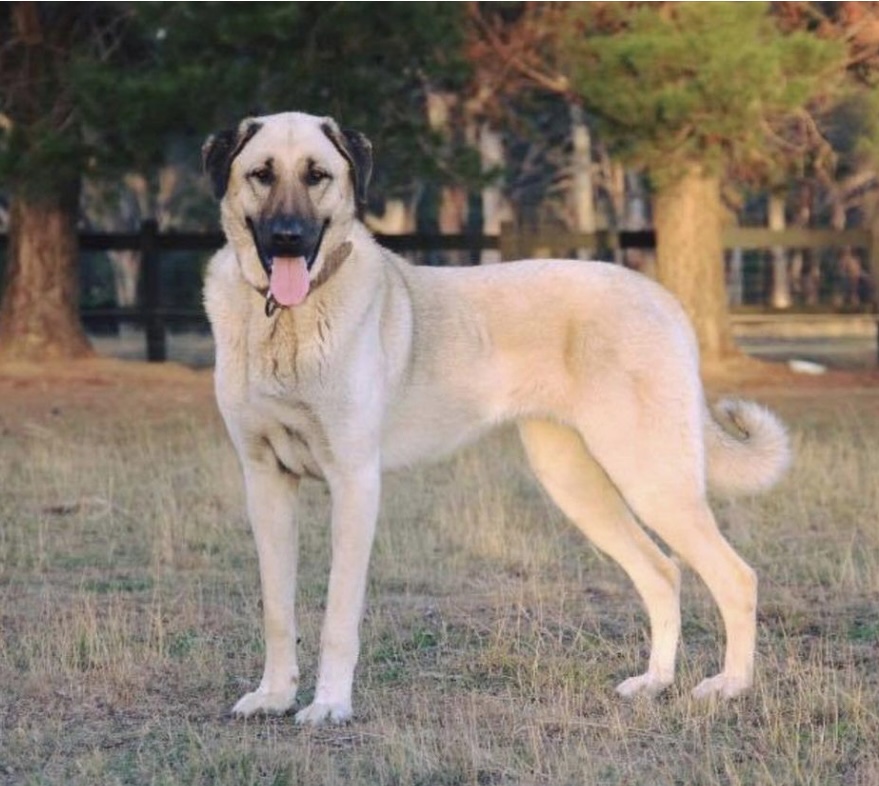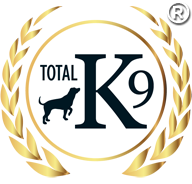There are many qualities that are important in guard dog breeds – loyalty, obedience and responsiveness to training are some of the key factors. However, it is also important that the breed is powerful and fearless, without demonstrating aggression in inappropriate scenarios. Kangals are a large, powerful breed, commonly used as a guard dog because they embody all of these qualities.
Why kangals are a popular choice as a guard dog breed
Kangals are native to Turkey, where they are commonly used to guard livestock against predators. They make excellent guard dogs due to their natural protective instincts, with puppies typically demonstrating guarding behaviours from a young age. Their territorial nature means that when they discover a predator, they will immediately attempt to intimidate the predator by barking. If the predator does not leave, kangals demonstrate fearlessness as they continue to approach and bark – eventually attacking if the predator is not deterred. They are an intelligent breed, which makes them easy to train. They are particularly suited to guarding sheep, cattle or other animals, although they can be taught to apply these behaviours in other scenarios.
Are kangals a fierce breed?
With their large stature, and imposing appearance – kangals give an immediate visual impression of ferocity. Another key reason they make a powerful guard dog comes down to the raw strength they have.
In fact, kangals have the highest bite force of any dog breed in the world, with an average measurement of about 743 PSI. This means they have a more forceful bite than some of the most powerful predators in the world, such as the cheetah (500 PSI) and even the lion (650 PSI).
However, despite their formidable appearance and territorial behaviour, kangals are often described as ‘gentle giants’ and are considered to have a predictable temperament and reliable behaviour. They demonstrate loyalty towards known humans and are able to interact peacefully and calmly with children.
What problems does the kangal breed have?
Like many large dogs, the kangal breed can have a tendency to hip dysplasia. However, this is one of the relatively few known health issues with this strong, powerful breed.
They have a typical lifespan of 12-15 years, which is considerably longer than some other dog breeds of their size.
While the Kangal Shepherd Dog is a typically healthy breed, it is susceptible to the same diseases that affect other canine breeds. Although not every Kangal Shepherd Dog may be affected, knowing about these conditions can help you make an informed decision.
Health issues are widespread in Kangal Shepherd Dogs, and they include: Hip dysplasia and Entropion Tumors.
In order to be happy and healthy, the Kangal Shepherd Dog need a large amount of outside space. Keep the breed active and mentally stimulated by taking it outside for at least an hour a day, preferably more.
The Kangal Shepherd Dog thrives when allowed access to a secure yard; they are a guard dog at heart.
Cleaning its teeth and trimming its nails are two other necessities for the Kangal Shepherd Dog. If you want to keep your Kangal Shepherd Dog healthy, you should brush its teeth at least twice a week to prevent tartar buildup and the bacteria it attracts. We recommend daily.
It is recommended that you check your dog’s nails once a month to see if they need to be clipped. However, a Kangal Shepherd Dog’s nails will likely remain in outstanding condition on their own if the dog is allowed ample time outside. Examine the dog’s ears for any evidence of dirt or debris that may have settled there.
History of Kangal dog breed
The Kangal Shepherd Dog originates from Turkey, specifically the Kangal District of the Sivas Province, where the breed may have been first discovered.
Legend has it that local villagers bred this type of dog to protect themselves from bears and other predators. Kangal Shepherd Dogs quickly gained a reputation for being reliable herding companions.
It wasn’t until 1985 that Judith and David Nelson brought the breed to the States. Some people still aren’t convinced that the Kangal Shepherd Dog and the Anatolian Shepherd Dog are two distinct breeds but rather the same.
Size of Kangal guard dogs
On average, Kangal Shepherd Dogs range in size from 90 to 150 pounds and 28 to 34 inches at the shoulder. The female Kangal Shepherd Dog may be a little smaller than the male.
While breed standards exist, some dogs may be significantly smaller or larger than the norm.
Personality of Kangal guard dogs
The temperament of the Kangal Shepherd Dog has earned them the nickname “gentle giants.” Although this dog is extraordinarily huge and has powerful defensive instincts, it is also capable of forming strong, loving relationships with the people in its life.
It is important to remember that the Kangal Shepherd Dog has a streak of independence and can become stubborn, so early socialisation and training are crucial. A dog’s education never ends.
Adopting a Kangal Shepherd Dog requires a significant time and energy investment in the dog’s upbringing and socialisation, but the reward is a highly devoted companion.
Kangal Feeding
A healthy diet for a Kangal Shepherd Dog should be designed for an active large breed.
If a Kangal Shepherd Dog doesn’t get a lot of activity every day, it might easily put on excess weight. Instead of leaving food out all day for your Kangal Shepherd Dog, measure out twice daily feedings to keep it in good health.
The nutritional requirements of a Kangal Shepherd Dog vary from puppyhood through adulthood and into old age, as is the case with all canines. Since there is so much diversity among individual dogs in terms of weight, energy level, and health, you should consult with your veterinarian before making any changes to your Kangal Shepherd Dog’s food.
Summary of Kangal
The Kangal Shepherd Dog is a breed of dog that thrives in a variety of climates. Provide enough of clean water for your Kangal Shepherd Dog to drink during the warmer summer months so that he may stay cool and hydrated.
When raised with children, the Kangal Shepherd Dog typically thrives. Supervise playtimes involving very young children, especially when dealing with such a large dog, and make sure that appropriate limits are established early on for both parties.
The Kangal Shepherd Dog has a history of providing livestock protection, but it may not get along well with other pets in the home. When introducing a new dog to an established pet, it is important to keep an eye on things.
Finally, this breed benefits greatly from early socialisation. Maintain a consistent training schedule and always praise your Kangal Shepherd Dog when it behaves.

